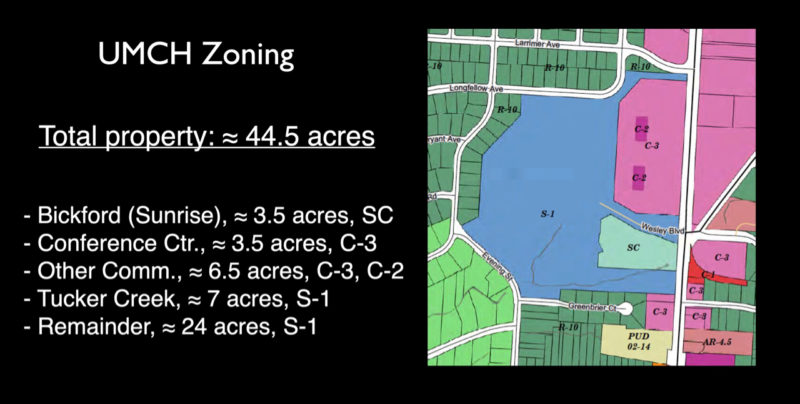Ohio Health and Worthington amidst covid-19
Dear Reader,
I freely admit that it is hard—and maybe not even sensible or proper—to think about anything other than covid-19 at this time. Preservation of life, and the life we love, make all else pale. The deaths, the jobless, the unknown, all make for the most sober and serious of times.
And yet reminders of “normalcy”—that there will be a post-covid Worthington—are, I believe, important to keep alive in our hearts and minds so as to keep our spirits up and our judgments sound. So I offer brief comments below about an issue that will impact our community for many years to come.
Last Wednesday, the City announced that Ohio Health had withdrawn its request to rezone a small parcel of land (≈ 0.5 acre) along Larrimer and High. This rezoning was to be part of Ohio Health’s plan to develop a 60,000 sf medical facility on ≈ 3.4 acres along High St., in the far northeast corner of the roughly 38 acre UMCH parcel.* As has been widely reported, Lifestyle Communities currently controls development rights for the UMCH-owned property (it is understood that LC is approx. 6 years in to a ten year agreement with UMCH). Ohio Health’s rezoning application had been signed by both UMCH and LC (LC Larrimer LLC).
There are two basic points I want to make,
- Ohio Health remains committed to developing a medical facility in Worthington. “We will be pursuing an alternative in the community and look forward to moving a project forward in the future” (Roland Tokarski, OhioHealth VP, construction, real estate and facilities, April 1). City staff is working to expeditiously identify other possible sites.
- Ohio Health’s decision to no longer pursue their facility at UMCH should in no way be interpreted as indicating dissatisfaction with the city government’s policies or practices. Nor reflecting negatively on the attractiveness of Worthington as a community—including its business-friendliness—in which to locate and operate. At a mid-February project briefing that I attended, Ohio Health presented well-developed conceptual plans, drawings, and a detailed timeline for moving the project through city processes toward actual construction and completion. To all appearances, it appeared to be a done-deal. Their decision to no longer work with LC, and UMCH, to bring this project to fruition appears to be based entirely on internal factors which have not been made public nor to which I am privy. I do hope that we will, in coming months, gain an understanding of what prompted Ohio Health’s sudden departure from this site in order to better prepare us for what may lie ahead as we seek a positive outcome at the UMCH property.
In closing, as always I welcome comments and critiques, about the subject at hand or any other matter on you mind. Be well.
* The 38 acre figure used above was determined by subtracting the acres for Bickford (3.5) and the Conference Center (3.5) from the total (44.5). Zoning and acreage for the property is roughly as follows:
- Total ≈ 44.5 acres
- Bickford (Sunrise) ≈ 3.5 acres
- Conference Center ≈ 3.5 acres
- remaining commercial (C-2 and C-3) along High St. ≈ 6.5 acres
- S-1, ≈ 31 acres (Special-1; public and semi-public uses, including parks, hospitals, education and religious institutions, etc.); this includes ≈ 7 acres along Tucker Creek

You must be logged in to post a comment.